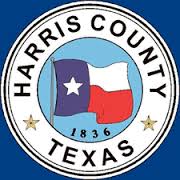More than 15 months after flooding from Hurricane Harvey shuttered Houston’s 20-story criminal courthouse, county leaders say they will begin in January on the first phase of a multi-part $86 million restoration project, which won’t be finished until 2020.
But there is no timetable for the most ambitious part of the project — not scheduled to begin until June 2019 – that would greatly expand the chronically-crowded lobby areas, add more elevators and move critical building machinery out of the basement.
The extensive flood damage to the downtown skyscraper at 1201 Franklin has forced the relocation of hundreds of attorneys and staffers from the courthouse offices of the district attorney, public defenders office and other county departments to far-flung buildings across the city. The closure also forced dozens of courts to locate in other county courthouses, generally doubling up with courts that weren’t damaged, which has disrupted trials and clogged dockets.
The damage has also reignited the debate over the wisdom of making repairs to the critical court complex on the banks of a flood-prone Buffalo Bayou.
“We can’t possibly ask tax payers to foot the bill for redesigning the Criminal Justice Center without knowing the exact cause of the repeated flooding, and what is being done to stop it from happening yet again,” Harris County District Attorney Kim Ogg said Friday. “We have to object.”
[…]
“Things are progressing far slower than they should and the direction the county is going is just patchwork, not a long-term solution,” said Chris Tritico, a prominent attorney who has proposed converting the courthouse into an office tower. “We need a long-term solution that will keep us from having to do this again in a few years.”
Tritico’s proposal would be to build a new criminal courthouse across the street where the outdated family law courthouse now stands. That courthouse, which has been deemed a fire hazard because it lacks a sprinkler system, was scheduled for demolition. After the storm, it was pressed into service and now hosts docket calls and jury trials because the main courthouse remains largely unusable.
Tritico said repeated catastrophic flooding, along with long-standing design problems including a small lobby and limited elevator capacity, makes the building unworkable for the hundreds of residents coming who use it every day. The courthouse, which opened in 2000, was closed for a year of repairs after it was damaged by floods during Tropical Storm Allison in 2001.
“The problem with the Harris County Criminal Courthouse, besides the flooding, is that it’s just not functional,” said the attorney, who is part of the county committee to study the courthouse repairs. “The population of Harris County is increasing, not decreasing, so the number of people coming in that building every morning is going to increase. Until somebody takes a look at that problem, it will always be a problem.”
The fact that no one can say why the building flooded during Harvey is a problem, since if you don’t know the cause you can’t say with any certainty that it won’t happen again. The building has to be downtown near the jails, so relocation options are limited. In the meantime, court is being held all over the place. Good luck getting your arms around this one, Lina Hidalgo.


I was at the briefing. Tony Foster did not say the cause of the flooding was unknown. Regarding the jury complex, he identified the entry at its duct work. The remedy is to take all power and mechanical and relocate them above ground. All other points were sealed and did not leak. As to the CJC, he said leaks came at the front of the building, where the sidewalk is over portions of the basement. Pinpointing the exact location will require digging, but he neither claimed the location was unknown nor that the remedy has not been determined. I am not claiming to have the engineering experience to corroborate these claims, but they were made.